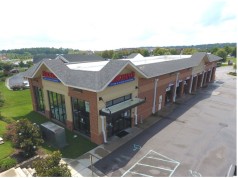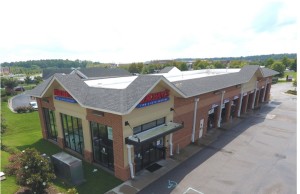20 Homeless Arlington Vets Housed in 2015
Second Community in Nation to Reach “Functional Zero”
Pursuing goal of Zero:2016
Washington, D.C. – January 15, 2015 – (RealEstateRama) — In January 2015 Arlington, along with 74 other communities nationwide, formally committed to ending veteran homelessness by the end of the year. Twelve months later it’s “mission accomplished,” as Arlington moved 20 homeless military veterans from the streets and shelters into permanent, stable housing and achieved functional zero for veteran homelessness in 2015.
“This is a tremendous milestone for our community,” said County Board Chair Libby Garvey. “Committing to end veteran homelessness in 2015, and chronic homelessness in 2016 [which Arlington has also done as part of the Zero:2016 Campaign], was a lot to bite off. But if any community could do it, we were confident it would be us. We had the will, the resources and the people to make it happen.”
Functional zero means that, at any point in time, the number of veterans experiencing sheltered and unsheltered homelessness in a community will be no greater than the average monthly housing placement rate for veterans experiencing homelessness in that community. In other words, a community that reaches functional zero never has more veterans experiencing homelessness than it has proven it can house in an average month.
How we did it
While the initiative was spearheaded by the County government, it was a true community effort.
“Zero is a very big number when it comes to homelessness,” said David Leibson who, along with Melissa Bondi, co-chairs the County’s 10 Year Plan to End Homelessness Executive Committee. “The level of cooperation and collaboration among County agencies, non-profits and others who have a stake in ending homelessness in Arlington has matured tremendously over the past half-dozen years or so. We’ve got people on the same page. We’ve agreed that our path forward must include an adequate supply of affordable housing – the County and the public and non-profit sectors are addressing that. We’ve agreed that preventing homelessness before it occurs is a smart investment – and we have programs in place to provide emergency or short-term assistance with rent, utilities and other expenses. And probably the most important thing, we’ve seen first-hand that a roof over your head isn’t enough sometimes – you need ongoing support to help you maintain that housing.”
The County’s approaches are working, said Bondi. “In the last five years we’ve reduced the number of people in shelters or on the streets by more than half. That’s the result of a lot of hard work from service providers, a legion of volunteers and great community support along with federal, state and county funding. We knew going in that getting to zero was going to be a challenge, but we weren’t going to back down from it.”
Arlington’s effort began nearly a decade ago
Cynthia Stevens, Housing Assistance Bureau Chief for Arlington’s Department of Human Services (DHS), attributes much of the success in ending veteran homelessness to steps taken by the community nearly a decade ago. “Fortunately, we have a community and elected officials who understand solutions aren’t going to come out of thin air. Over time, we have built a strong community infrastructure that starts with a 10 Year Plan to End Homelessness. The 10 Year Plan has helped focus efforts on identifying our issues and their solutions. It’s been a catalyst for everything from ongoing development of affordable housing units, to expanding our supportive housing services, to improving partnerships among non-profits and the County, to engaging the business and faith communities… all the things that are needed to make it work.”
The community’s greatest asset, said Stevens, is the human element. “It takes people to connect those pieces together and actually get folks off the streets and out of shelters into permanent, stable housing. Staff at DHS, at our non-profits and shelters, and across our entire continuum of care have developed a tremendous level of expertise in meeting the challenges associated with housing veterans and others with significant housing barriers.”
Taking a deliberate approach was a big part in Arlington’s success in housing veterans, said Kathy Sibert, president and chief executive officer of A-SPAN, a local non-profit that works closely with homeless individuals, including veterans. “We literally kept a list of our homeless vets by name and sat down in face-to-face meetings on a regular basis to assess how they were progressing toward the goal of stable housing: have they been connected with Veterans Administration benefits… have we reached out to their families to reconnect or mend fences… are their physical or mental health issues being addressed… have we helped them find a job or connect them with a job coach to increase their skills… have we located a housing unit that will accept them. Every person has unique circumstances, but the toolkit we’ve assembled is pretty strong and we’ve become adept at addressing challenges as they come.”
Next phase of Zero: 2016
The next phase of Zero:2016 involves housing those considered chronically homeless — someone who has experienced homelessness for a year or longer, or who has experienced at least four episodes of homelessness in the last three years, and has a disability. The goal is to reach functional zero for this population by the end of 2016.
Arlington Va., is a world-class residential, business and tourist location that was originally part of the “10 miles square” parcel of land surveyed in 1791 to be the Nation’s Capital. Slightly smaller than 26 square miles, it is the geographically smallest self-governing county in the United States, and one of only a handful with the prized Aaa/AAA/AAA bond rating. Arlington maintains a rich variety of stable neighborhoods and quality schools, and has received numerous awards for Smart Growth and transit-oriented development. Home to some of the most influential organizations in the world — including the Pentagon — Arlington stands out as one of America’s preeminent places to live, visit and do business.
Media Contacts
Kurt Larrick
703-228-1775




